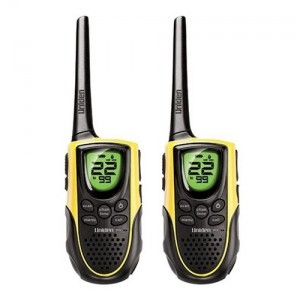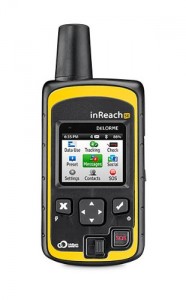Ask anyone what the biggest problem in the world is and the answer will be communication. In an emergency situation, communication is vitally important. Picture yourself in someone else’s shoes, maybe in Hurricane Katrina, the Boston Marathon bombing or a train/plane crash. How would you get people to notice you? How would you notify your family that you’re either OK or injured and in need of help?
In many disasters or emergency situations, family members can’t get in touch with each other. Relieving that stress might just be easier than you think. In this post we’re going to give you some tips on making yourself heard when bad things happen.
1. Walkie Talkies:
You might have had a cheap set of these as a child. The ones we are talking about here are very different, they’re certainly not toys. With ranges that vary from ten miles to about eighteen miles, the modern two-way transmitters are perfect for emergency use, ideal for situations where cell phone service isn’t available or non-existent, let’s say in or after a hurricane, tornado or flood.
There are many different brands of walkie talkies but you can research which units would best serve you. Unlike a cell phone, you can’t talk directly to another person unless they are on the same channel as you. Additionally, communication isn’t private. Anyone on the same channel who is in range can hear what you say. You can see how this might cause problems. Because of this we suggest the use of codes, nicknames, special phrases, things like that. While there may be dozens of people trying to reach relatives with similar names as your family, we doubt that there would be many named Batman95 or WonderWoman327. Messages can be simple words or codes. Many of the two-way communicators that we’ve seen can send beeps which would allow you to use Morse code or something similar to get someone’s attention.
Prices range from around $20.00 to just under $50.00 for two devices. The more expensive ones have better and more varied features, of course but even the basic ones have a decent range. We’re confident that you can see the usefulness of walkie talkies even in non-emergency situations. A vacation with two cars, boating, camping, hiking, etc. could be enhanced if you could communicate with family and friends without worrying about cell phone coverage or roaming. Here’s one set that we found which came highly recommended:

2. Satellite Phones:
The ultimate emergency communication device doesn’t come cheap. Not only are the units themselves expensive, ranging from just under $300.00 to well over $1,000.00, but they require some type of subscription service for anything other than S.O.S. messages. Most people probably only need one unit since satellite phones have the ability to send text messages to cellphones or make voice calls to landlines/cellphones. When you consider the roaming charges you could incur when you travel to a foreign country, a monthly subscription plan plus the phone itself might just be the lower cost solution.
These phones are fully independent of cellphone towers. The signal they generate actually bounces off satellites that are in a geostationary orbit over the earth. Aside from being expensive, satellite phones seem to be fairly difficult to program. You would want to spend a lot of time getting acquainted with the one you buy before you find yourself in a situation where you need to use it.
Although satellite phones are able to receive voice calls, those calls can be very expensive, depending on the company and plan you use. Keep that in mind. We’re suggesting one of these devices for safety’s sake, not instead of a cellphone. It should be obvious that if you’re thinking of setting off on a cross-country hike or a mountain climbing expedition, you should take a satellite phone with you.
What does a satellite phone look like? Pretty much like a walkie talkie but with a much longer antenna. The unit shown below has its antenna in the down position. It would have to be fully extended when in use:

3. Codes and Secret Writing
OK, not secret writing but something like Morse code could potentially come in handy in different situations. Even though this code is over a hundred years old, it is still used today, using only two things, dots and dashes, in much the same way that our computers use zeroes and ones. A dot is the short note, dahs or dashes are the longer ones. The duration of these two signals varies with each user. As a matter of fact, in WWII telegraph users were able to recognize the timing patterns of other users with which they communicated frequently. In some cases, this led to the discovery of spies who were pretending to be someone else. Additionally, if a telegraph operator was being coerced into sending signals against their will, they were able to change the cadence of the dots and dashes, thus letting the other party know that they were in trouble.
We’re not saying that you have to become proficient in Morse code but simply knowing the universal distress call, SOS, might come in handy at some point in your life. You don’t need electricity for this code, rapping on the wall will work just as well. Flashlights, car horns, walkie talkie buzzers, etc. can be used to send “… _ _ _ …” (three dots, three dashes, three dots). Any emergency personnel anywhere in the world will recognize this as an SOS signal.
A quick check with the Play Store came up with many free apps that you can use to learn rudimentary Morse code. Yes it’s letter by letter only but we’re quite sure that text short codes would come through loud and clear on Morse code just as they do in text messages. “OMG SOS” is one that comes to mind. (Joking, of course.)
The second part of this section that might be worth learning is the NATO phonetic alphabet. You’ve all heard it in movies, we’re sure of that. Instead of spelling a word to someone over the phone this way, “B for bear, E for Edwin, etc.”, your message would sound much better if you used the NATO phonetic alphabet. Each letter has a matching word that is virtually impossible to interpret as something else. Brian, for instance, would be Bravo, Romeo, India, Alfa, November. There are only twenty six letters, right? It’s not that difficult. In a situation where you have a limited amount of time to get a message out, this alphabet eliminates the need of dreaming up a word that starts with Q as well as preventing your message from being misinterpreted. “Did she say Queen or Clean?” Quebec is the word used for Q so there isn’t much of a chance of that being misheard.
Finally, if all we’ve done is make you think about what you would do in an emergency situation, we’re happy. Bad things happen to good people, every week, every day. How you react and how quickly you react can sometimes make a huge difference. Our next post will continue in the same vein, so stay tuned. Questions, comments and experiences are all welcome. Use the form below to comment or, better yet, Like our Facebook page and contact us there. Here is the link: Computers Made Simple on Facebook.
Thanks for reading!
